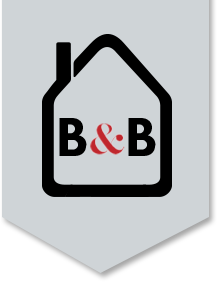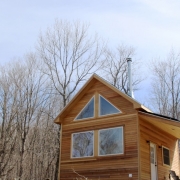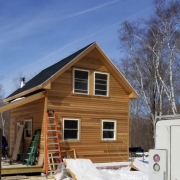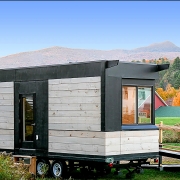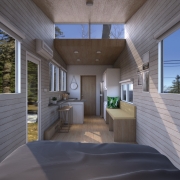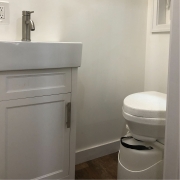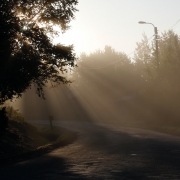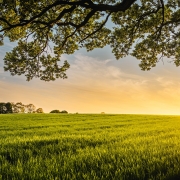How Do I Get Power & Water To My Tiny House? All About Tiny House Hookups
Hooking up a tiny house to power, fresh water, and waste water is easy– just plug and play!
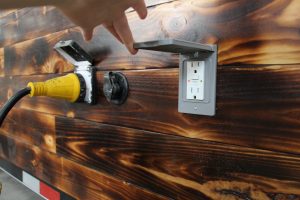 From left: the tiny house power source, an extension cord with an adapter to fit into any three-pronged outlet; the water hose inlet; and covered outdoor outlets for all your chili-pepper-string-light needs. Not pictured: grey and black water outlets, under the house.
From left: the tiny house power source, an extension cord with an adapter to fit into any three-pronged outlet; the water hose inlet; and covered outdoor outlets for all your chili-pepper-string-light needs. Not pictured: grey and black water outlets, under the house.
Fresh Water
First, you’ll need a source for fresh water in your tiny house. You can source water from a town water line, a well, or any other potable water source.
Tiny houses that stay in one location can hook up to water through an RV hookup, which includes an underground water source with a pedestal that feeds water into the sinks and other faucets as they are used.
If there are water tanks in your tiny house, they can be filled with potable water via a hose, whether the hose is permanently attached to a stationary house (in freezing temperatures, wrap heat tape along the hose), or, if you’re traveling with your house, intermittently. You can also have a water truck come and fill up your water tank, although that’s a more expensive solution.
Waste Water
How will you get rid of your waste water?
Depending on what your town allows, you may separate your grey water from your black water if you can use your grey water, or you may put all waste water into black water. Grey water may be used in irrigating gardens (again, as long as your town allows it) and you use eco-friendly soap products. More on greywater use is here.
Either way, your waste water will need to go somewhere! B&B Micro Manufacturing can build in grey and black water tanks to your tiny house, or you can permanently tie-in your tiny house to a septic or sewer system.
Power
The simplest, cheapest power source for your tiny house is running an extension cord a building that already has power. Many people who live in their tiny houses full-time park their houses beside or behind the house of a friend, relative or landlord. Others may lease or purchase a property that already has a power source. If you need to have new power lines run to your property, check in with your town. Learn more about connecting undeveloped land to power and water sources here.
Solar powering tiny houses is another option, albeit the most expensive one. Off-grid solar power systems for tiny houses, including solar panels and batteries, cost anywhere between $3,500 and $10,000, depending on your power needs. If you’re choosing solar power for your tiny house, we will help you choose the most energy-efficient appliances for your power system. You can read more about your solar options and our tiny house solar energy partner, AltEStore, here.
The TL;DR* for tiny house water and power is that tiny houses work just like RVs, and they can be quite simple and easy to plug in.
Have questions about your tiny house power and water? Ready to buy your tiny house? Contact us!
*For all you newcomers to the internet (where have you been?), TL;DR means “Too Long; Didn’t Read”, or “In Summary” if you’re being polite.
